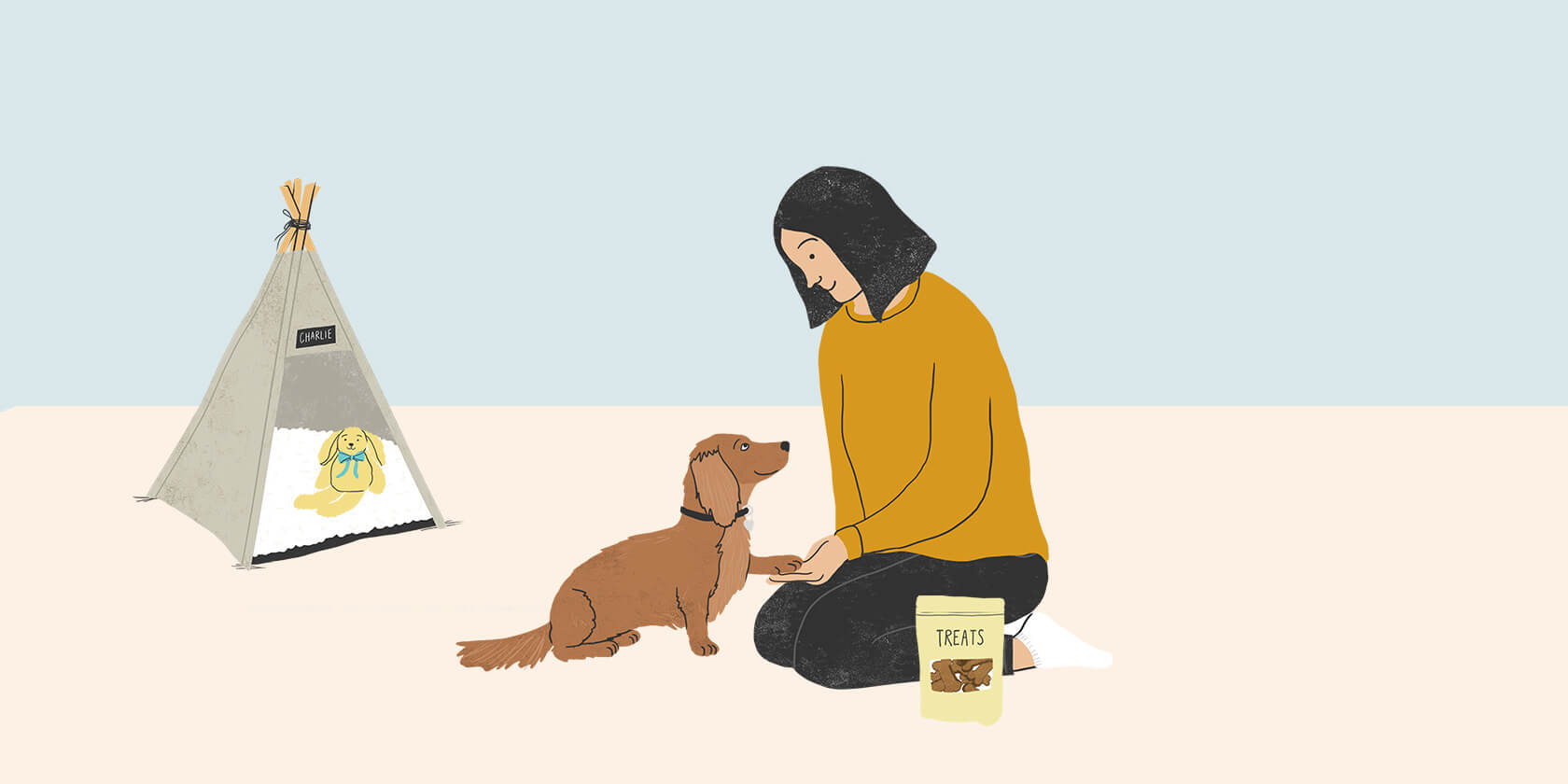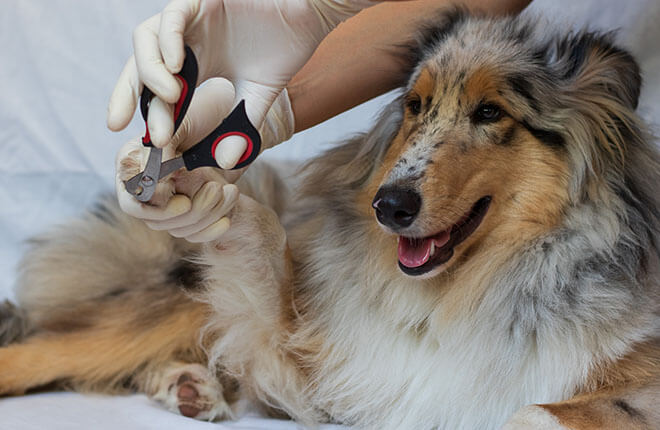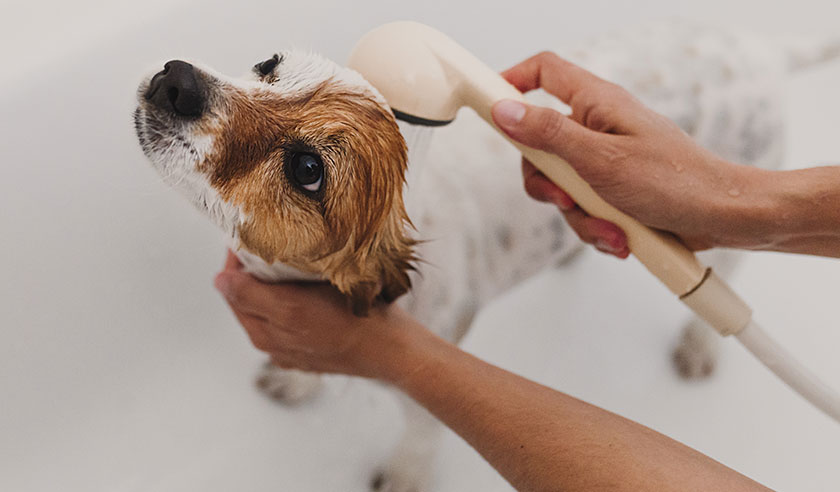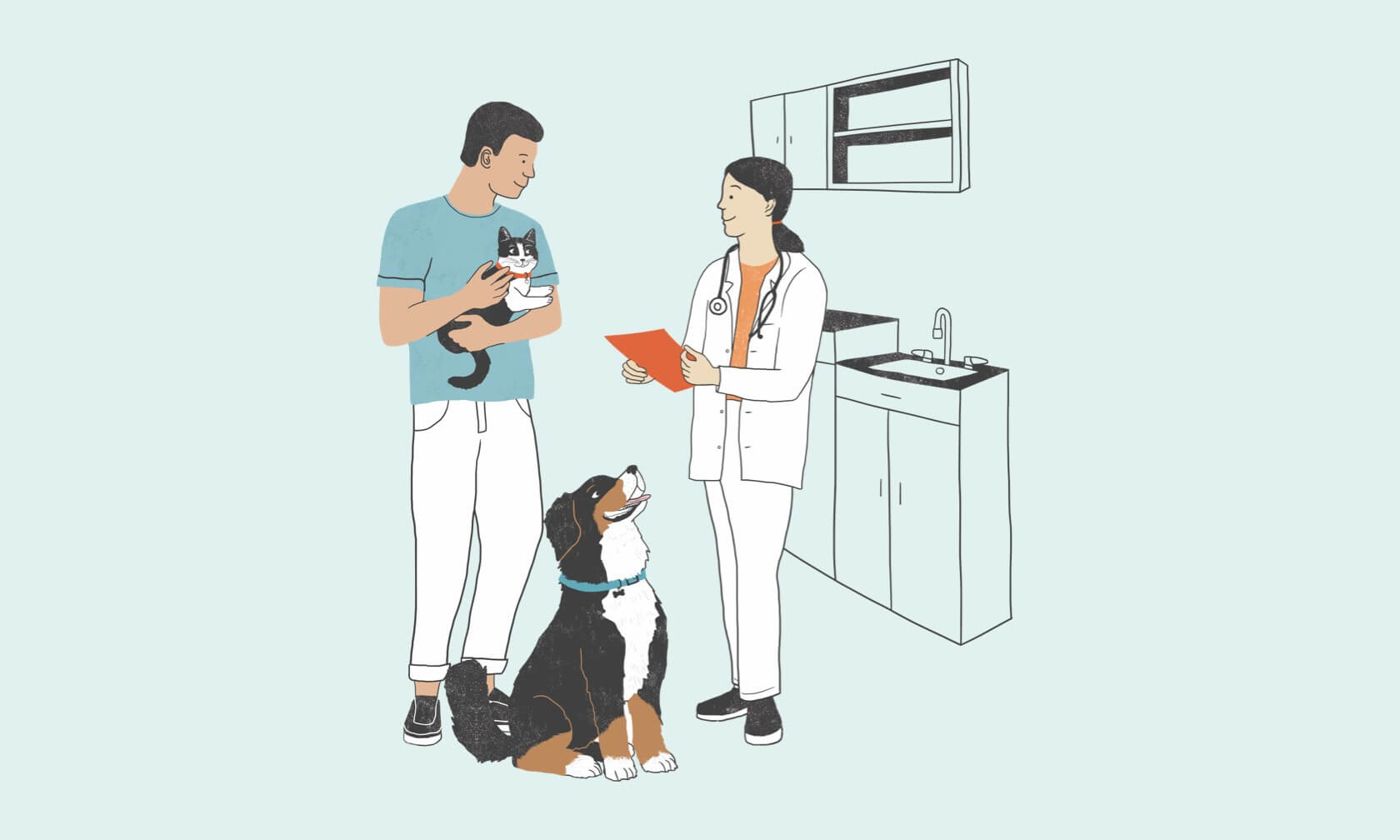Trimming your dog’s nails at home might seem like a daunting task, but it’s an important and even rewarding one. Without nail trimming, your dog may have trouble gaining traction. Walking on overgrown nails can damage the nail beds and cause discomfort or even pain. And of course, longer nails are more easily caught in cracks and crevices, which can hurt the toe or damage the nail. But don’t worry — with some practice and patience, you’ll soon be giving your dog a top-notch mani-pedi.
About Your Dog’s Nails
A dog’s nails are a bit different than ours, so it’s important to learn some tips for trimming them safely and making the experience as positive as possible for your pup. Instead of a flat nail like humans have, our dogs have curved and oval-shaped nails. Dog nails are made up of two major layers: a dead and nerveless outer layer made of keratin protein surrounding the very sensitive and very much alive blood vessel-packed tissue called the quick. If your dog has clear nails, you can see the pink, tube-like quick in their nail. If your dog has black nails, it can be much more difficult to know where the quick begins and where to avoid cutting.

What You Need to Trim Your Dog’s Nails at Home
You need a few basic supplies to tackle nail trims yourself at home.
- Treats. Have some treats or yummy food like peanut butter to reward your dog for staying calm throughout the nail trim process. You can give a treat after clipping each nail or finishing each paw. Another trick is placing a licking mat smeared with wet food or other spreadable treats on the wall to use as a distraction for your dog while you handle their paws. A food-stuffed toy can also work well to keep your dog occupied during the trim.
- Dog nail clippers. If you have a small dog or puppy, nail scissors (or cat nail clippers) are easier to use and manipulate. If your dog is large, choose the larger nail clippers, often called “guillotine” style. These can cut through thicker nails compared to the scissor style. If your dog is medium-sized, you can try either style, but the scissor might not be strong enough to cut through thicker nails. Ask your veterinarian for advice if you aren’t sure.
- Styptic powder. Keep some styptic powder on hand to help stop the bleeding if you trim a nail too short and cut into the quick. In a pinch, you can substitute a bit of corn starch for styptic powder.
How To Trim Dog Nails at Home
- Sit with your dog in a well-lit area.
- Gently hold your dog’s paw, pushing back any long fur away from the nail you’re going to trim.
- Firmly hold the toe pad between your thumb and forefinger, gently extending their toe to give you a better view of the individual nail.
- For scissor-style clippers, hold the clippers horizontally and perpendicular to the nail. For guillotine-style clippers, hold the clippers perpendicular to the nail in a direction that will cut from bottom to top. You want to be able to see where the clipper will be cutting.
- For clear dog nails, identify where the quick is before clipping so you can avoid hitting it.
- For black dog nails, focus on very small clips to cut down the hooked part of their claw.
- Clip just the tip of the nail straight across. You can angle the clippers slightly downwards in the direction of your dog’s nail growth. Doing so can help you get a closer trim without hitting the quick, as the quick tapers into a point inside of the nail.
And here are a few helpful tips for trimming your dog's nails at home:
- Start young. The best time to start getting your dog used to nail trims is as young as possible. Practice holding and touching their paws when they are a puppy and always provide treats to build the positive association. As your dog gets older, they will be much less likely to react to nail trims.
- Trim only one nail at a time. Trimming your dog’s nails can be nerve-wracking, both for you and your dog. If your dog appears stressed or won’t tolerate multiple nails being trimmed, make it easier for all by just trimming one nail a day.
- Ask for help. Having a second person focus on keeping your dog comfortable and entertained can be a huge help while you are trimming nails. A family member or friend can make all the difference.
- Don’t forget the dewclaw. Dogs naturally have a fifth digit equivalent to the human thumb that is located on the inside of their lower front legs near the paw. The dewclaw nail grows just as quickly as the other nails so don’t forget to give it a trim at the same time.
How Short Should You Trim Your Dog’s Nails?
The goal is to trim a dog’s nails short enough that the nail doesn’t touch the floor when they’re standing. But if your dog has long quicks (which makes this impossible) try to cut to within approximately 2 millimeters of the quick. With consistent and correct nail trims, your dog’s quick will naturally recede, making their nails easier to trim to the correct length over time. There is a lot of misinformation out there that purposely cutting the quick helps to shorten it in the future — this is not true and can predispose your dog to bleeding, infection, pain, and a complete refusal to tolerate future nail trims.
For black dog nails, trim very short lengths off the nail and look at the center of the nail straight on after each trim. The cut end of a nail will appear whitish when it’s just the two outer layers (the safe part to trim). As you trim closer to the quick, the center of the nail will begin to look like a black dot. Stop trimming when you see the center of the nail appear black. If you see pink at the center, that’s the quick, and you shouldn’t cut anymore!
What to Do If You Cut Your Dog’s Nails Too Short
Getting “quicked” is painful for your dog, and the injury tends to bleed a lot. But it happens to even the best of groomers! Some dogs might jerk or move their paw as you make a cut, or the quick might be hard to see or unexpectedly long.
If you’ve cut your dog’s quick, stay calm and keep hold of your pup. You don’t want them running around getting blood everywhere. And the calmer they are, the lower their blood pressure will be, helping to stop the bleeding sooner. Pinch a bit of the styptic powder or corn starch between your thumb and finger and press it directly on the end of the bleeding toenail. You can also dip the bleeding toenail into the styptic powder. Keep pressure on the nail for a few minutes, being careful not to squeeze your dog’s toe. If your dog’s toenail continues to bleed after ten minutes, contact a veterinarian for care. If you have hit the quick on one nail, it’s best to stop the nail trim session and try again in a few days or a week.
If clipping your dog’s nails at home is too difficult or panic-inducing, there is no shame in having their nails trimmed by a professional groomer or at your veterinarian’s office. In some cases, such as if your dog’s nails are overgrown, are curling into their paw pads, or your dog becomes extremely reactive during nail trims, it’s best to have a professional do the job. And if your dog has an infection at their nail bed, fungal infections of the nails, or their nails are cracked or split, do not trim at home. Veterinary staff or groomers can also give you tips for your dog’s particular nail issues to help you care for them at home in the long term.
ZPC-01314R1





